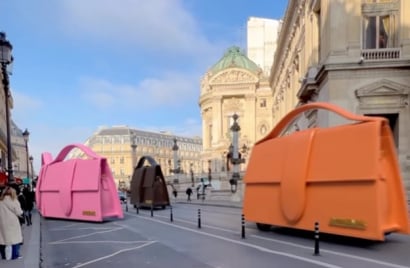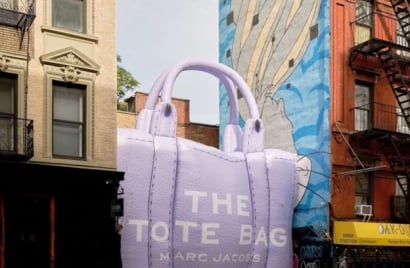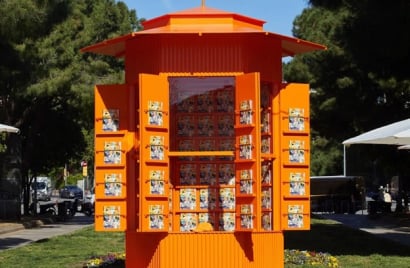
‘Happy mum means happy baby’
The Liberty Guild’s Aimee Luther on managing motherhood and work.

How brands can learn from the luxury sector to create campaigns that capture attention, drive engagement and build brand loyalty.

Luxury brands have long understood the power of physical experiences to immerse audiences in their rich heritage and the storytelling behind their products. However, in recent years, it’s become clear that the most innovative and exciting experiential campaigns are coming from the luxury sector, particularly in fashion and beauty. So, what’s fueling this investment in experiential marketing, and how is it influencing the wider brand experience landscape?
Luxury brands have long been shifting away from their traditional focus on older, wealthy clientele and have instead set their sights on trendsetting Gen Z and Millennials. This younger demographic is crucial for building the “cool factor” of a brand, and experience marketing has become a key strategy to engage them. We also know this group is highly responsive to brand experiences, which has fueled the meteoric rise of pop-up shops, bold PR stunts, and creative events.
But it’s not just about jumping on the experiential bandwagon—luxury brands are pushing boundaries and developing entirely new formats. A prime example of this is the rise of ‘hyper-real’ content. The trend first took off in April 2023, when Jacquemus created digitally rendered handbags seemingly driving through a city center. At first, it fooled us. But as the trend became widespread, the cachet wore off. Enter Marc Jacobs in September 2023, who turned the concept on its head by unveiling an enormous, IRL handbag installation in New York, leading us to believe it was another digital illusion until we realised it wasn’t. This surprising twist sent the industry into a frenzy, setting a new physical direction for the trend—one that might have reached its peak with the jaw-dropping Louis Vuitton store takeover in New York in November 2024.


This is just one example of how luxury brands are consistently leading the charge in experiential innovation. And it's not just about high-price tags. The Hermès ‘Le Monde d’Hermès Kiosk’ from 2022 is another great case, showing how simplicity and aesthetic appeal can create global buzz. The much referenced design has been featured in many a creative inspiration moodboard, as brands seek to emulate the simplicity and highly aesthetic approach that gained this little orange news stand industry fame around the globe.
As the lines between affordable luxury and true luxury continue to blur, how do the iconic luxury brands stand out from the wannabes? While many brands leverage the same hype-building tactics—think limited-edition drops, exclusive products, and visually captivating campaigns—luxury brands seem to have discovered the secret to success: simplicity and an unwavering commitment to a brand-first.
Luxury experiential campaigns don’t try to do too much. Instead, they focus on executing one idea extremely well—often at an over-the-top scale. This commitment to simplicity ensures that the campaign resonates with clarity and impact. But there’s more. It’s the combination of simplicity with a laser-focused creative brief that prioritises the brand-first concept that often propels these campaigns to global hype status.
![LV OOH].jpg](/application/files/cache/962676ef6133318fde721d68b99bf1cb.jpg)

What can other brands, particularly those trying to reach “aspirational” luxury status, learn from this? Ultimately, it’s the bravery of luxury brands that makes their experiences so successful. It takes confidence—backed by a lot of groundwork and research—to take bold risks. From an experiential-insider’s perspective, developing these ambitious campaigns often takes 9–12 months or more as brands and agencies work to break new ground without an instruction manual to guide them.
For those looking to create an aspirational luxury campaign in 2025 and beyond, here are a few tips to consider from the luxury playbook:
By embracing these principles, other brands can learn from the luxury sector’s fearless approach to experiential marketing, setting the stage for future campaigns that not only capture attention but also drive genuine engagement and brand loyalty.
With over 20 years of experience in experiential marketing, James has honed his skills at leading global advertising and experiential agencies before co-founding Backlash in 2017. Backlash was established as a response to the burnout often seen in agency life, creating a nurturing environment where creativity can thrive. Our mission at Backlash is to deliver "Big Agency Thinking, without the Price Tag," ensuring that the transformative power of experiential marketing is accessible to brands of all sizes, regardless of budget.
Looks like you need to create a Creativebrief account to perform this action.
Create account Sign inLooks like you need to create a Creativebrief account to perform this action.
Create account Sign in